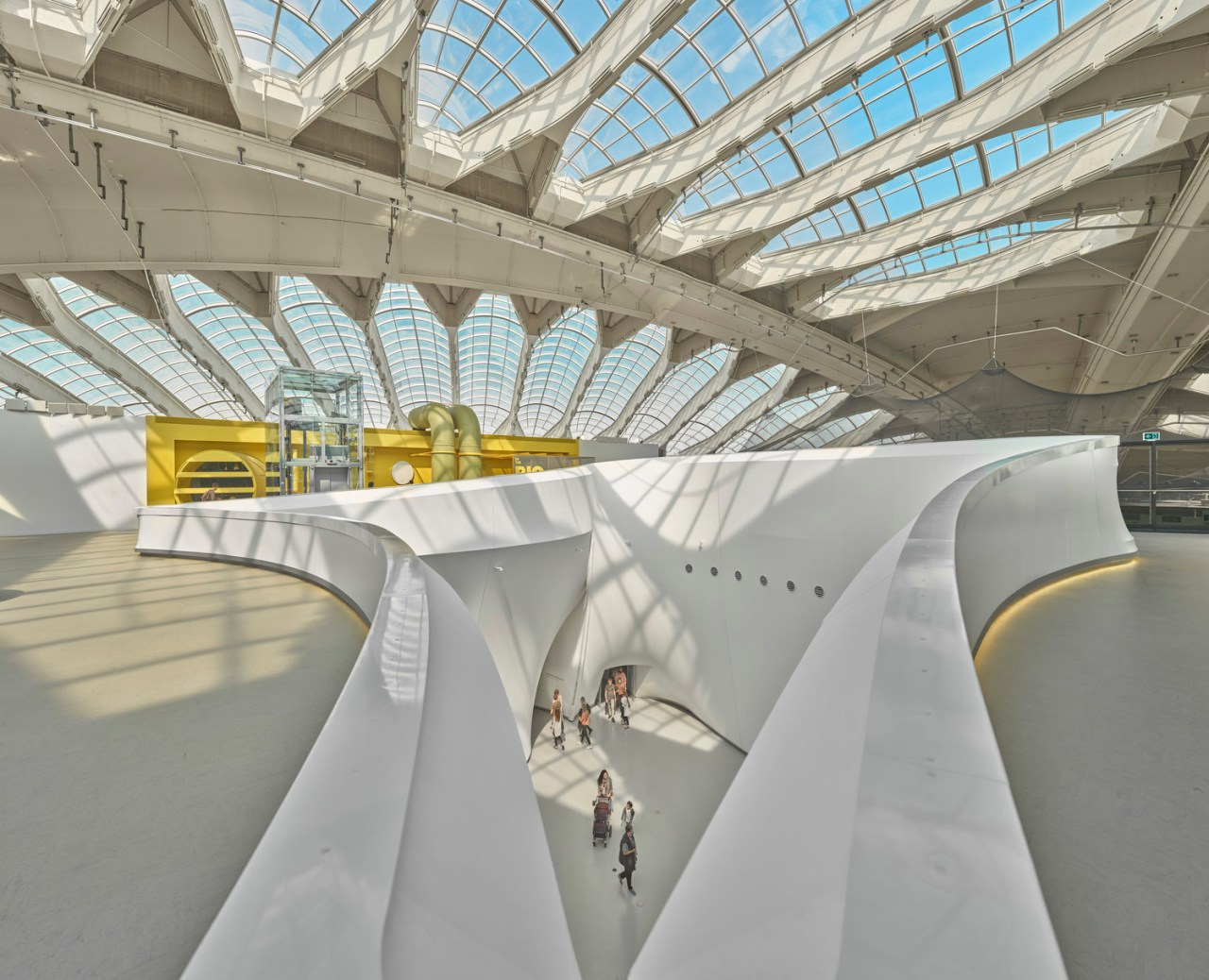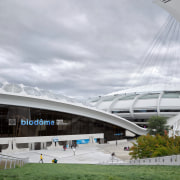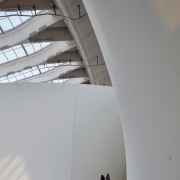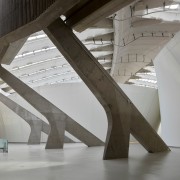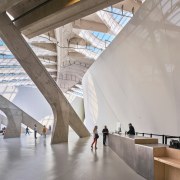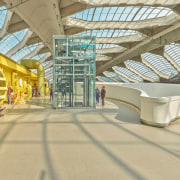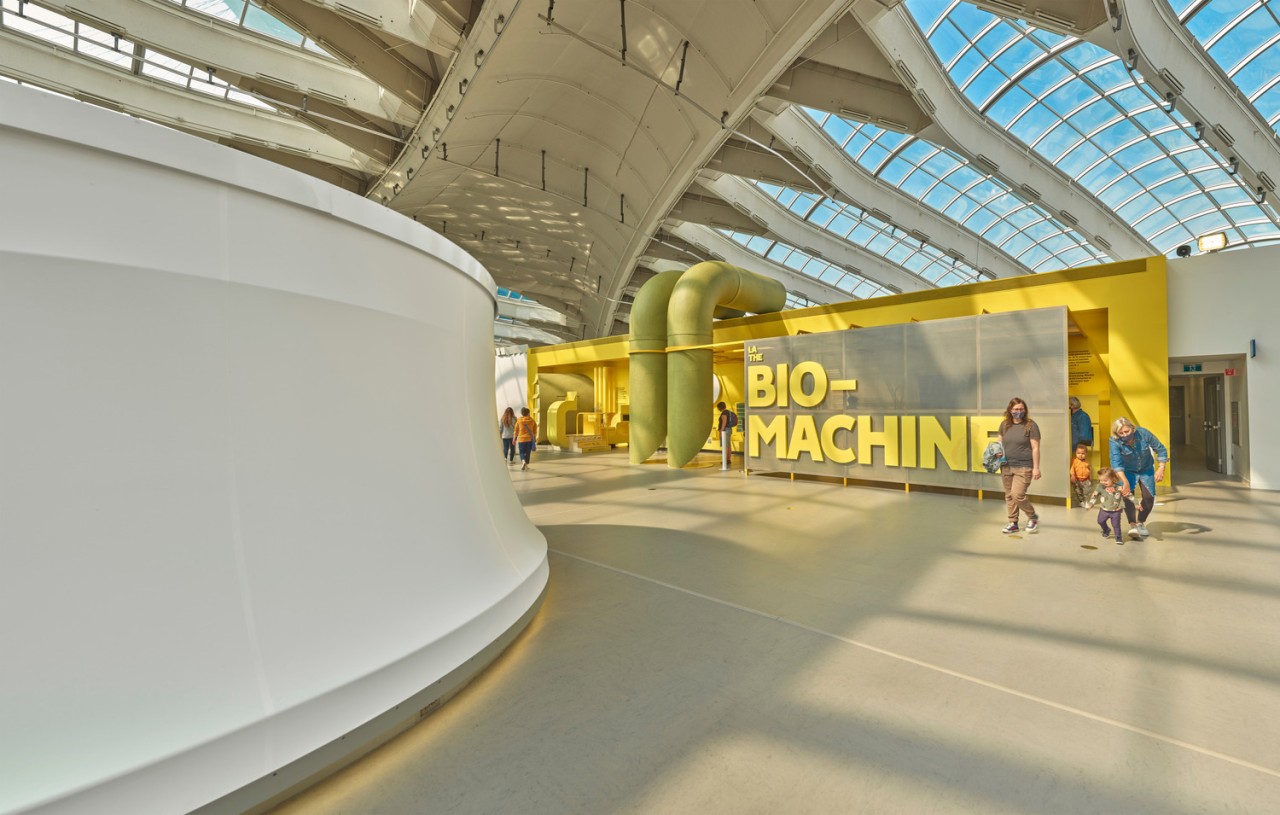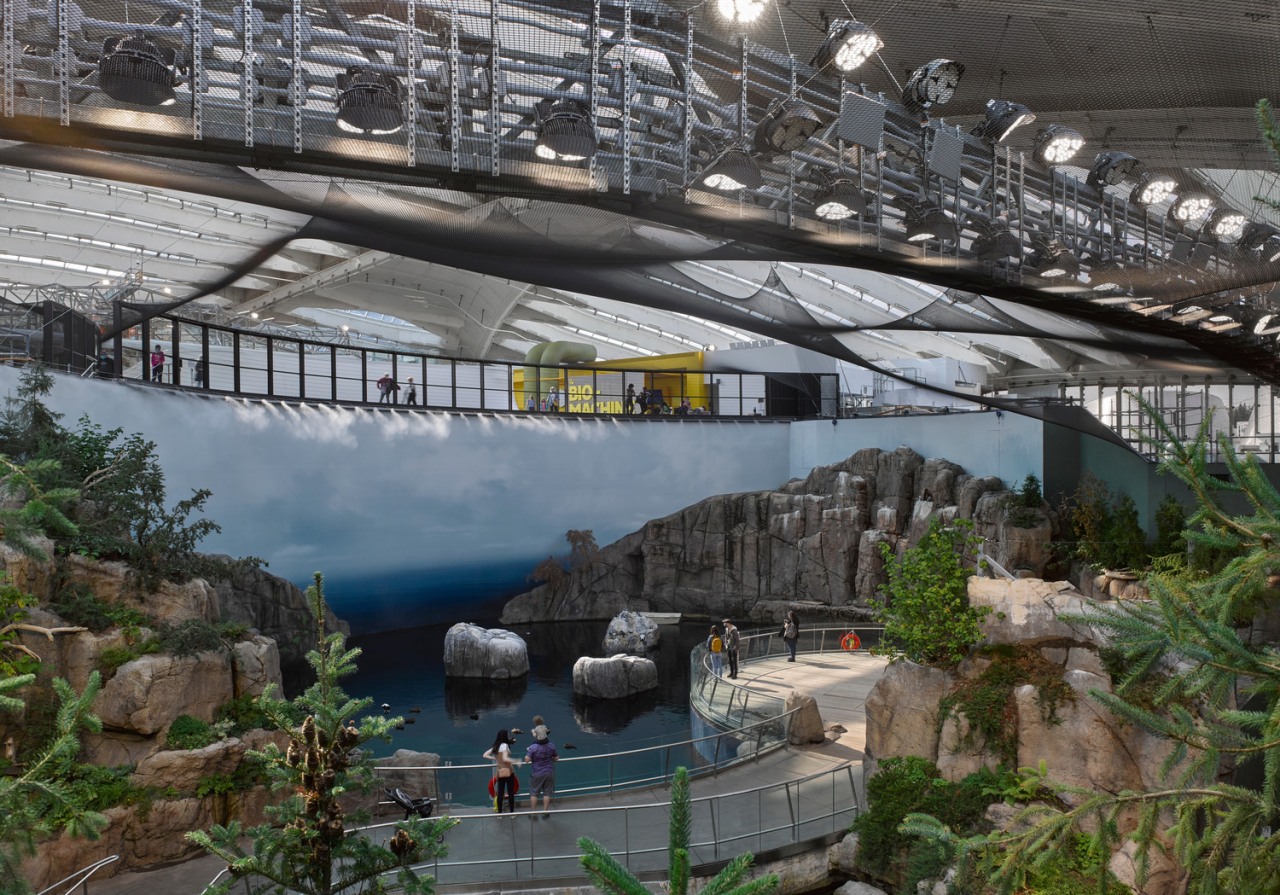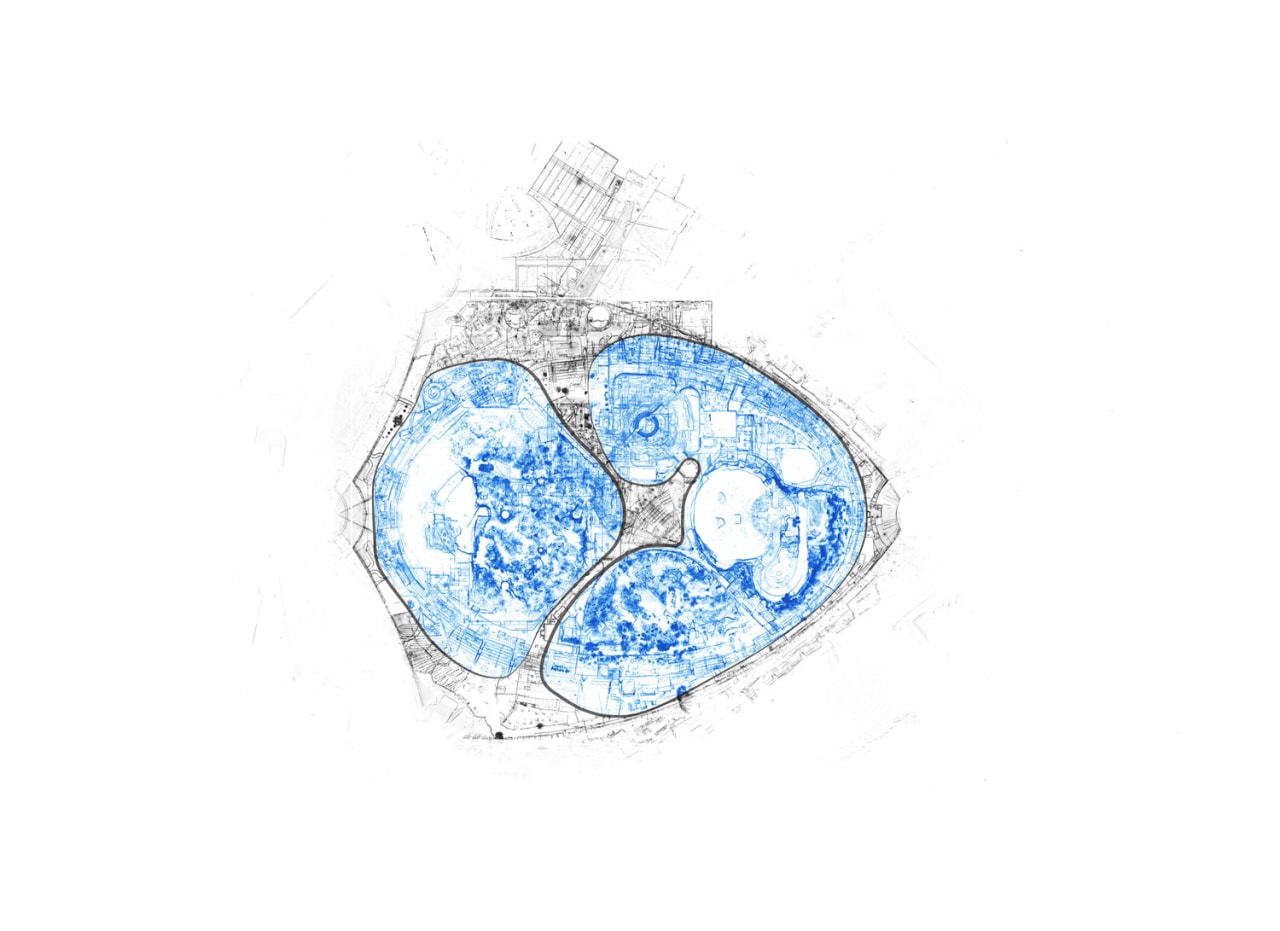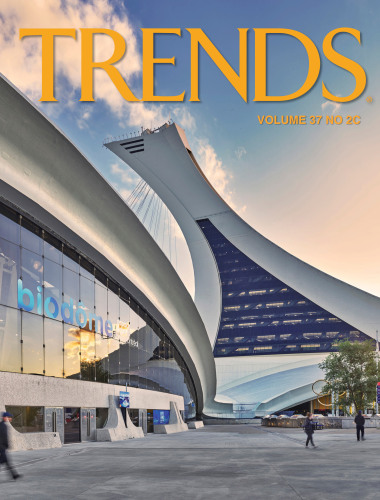Redesigned Biodome strikes immersive balance between humans and nature
First a velodrome for the 1976 Olympics, then repurposed as a biodome in 1992, now the redesigned Biodome – a Montreal science museum home to 250,000 animals – shines afresh
Designed by Kanva (in collaboration with Neuf Architects)
From the architects:
The newly redesigned Biodome, a Montreal science museum that immerses visitors in the authentic environs of multiple ecosystems, offers eye-architecture and an intricate under-pinning design.
Housed in the former Velodrome, constructed for the Montréal 1976 Olympic Games, the Biodome opened in 1992 and is a jewel in the crown of a consortium of facilities that collectively account for the most visited museum spaces in Canada.
After winning an international architectural competition in 2014, Kanva was commissioned for the $25 million project by Space for Life, the body charged with overseeing operations of the Biodome, Planetarium, Insectarium, and Botanical Garden.
Our mandate was to enhance the immersive experience between visitors and the museum’s distinct ecosystems, as well as to transform the building’s public spaces, says Rami Bebawi, a partner of Kanva and the project’s lead architect.
“In doing so, we proudly embraced the role that the Biodome plays in sensitising humans to the intricacies of natural environments, particularly in the current context of climate change and the importance of understanding its effects.”
A complex storyline
From the onset, Kanva studied the tremendous complexity of the building, a living entity comprised of ecosystems and very complex machinery that is critical to supporting life. They realised that any type of intervention would need to be very delicate, and that a global strategy to the scale of the mandate would require careful coordination and management of numerous micro interventions. Every decision required consultations across multiple disciplines, and it became a truly collaborative effort that embraced Kanva’s storyline.
“Everybody understood the global vision, and they carried that understanding with them in the spirit of collaboration,” says Bebawi. “It was a very inspirational experience that will serve as a model for better addressing environmental issues in design in the future.”
From an organisational perspective, Kanva began by targeting spaces that could be transformed in ways that would maximise the value of the building’s architectural heritage.
The carving of a new core combined with the demolition of the particularly low ceiling at the entrance of the building allows visitors to appreciate the impressive scale of the existing space.
In gutting the existing ceiling, Kanva opened the space skyward to the building’s extraordinary roof, composed of massive skylight panels that infuse an abundance of natural light.
A calming nucleus
With a massive open space now forming the core between the ecosystems, Kanva parametrically designed a living skin that they could wrap around the ecosystems, and which would serve as a guiding accompaniment to visitors.
With exceptionally complicated structural engineering, the installation of the prefabricated pure white, biophilic skin was a monumental task.
With no room for error, the skin was curved and stretched around a bowed aluminium structure, using tension, cantilevering, and triangular beams for suspension, and itself anchored to a primary steel structure.
Mechanical junctions were also incorporated in order to accommodate a variety of movements and allow for on-site adjustments.
The translucent skin harmoniously interacts with the skylights above, with bevelled horizons that elicit a sense of calm and infinity.
The new core also amplifies the sensorial experience of visitors, transitioning from its pure neutrality to the multi-sensorial discovery of its adjacent ecosystems.
“It’s a very powerful tool, half a kilometre in length and rising nearly four storeys,” explains Rami Bebawi. “It’s extremely emblematic of the space, and the white purity beautifully highlights and contrasts the original structural concrete.”
Sensorial design
Kanva then focused on the journey itself, designing new passages aimed at transforming the existing linear path of discovery into a more dynamic experience, where visitors take charge of their own journeys through the Biodome’s five ecosystems, housing more than 250,000 animals and 500 plant species.
Conceptually aiming for a more immersive experience, Kanva focused its attention on soliciting senses, relegating sight to the end of the line behind sound, smell, and touch.
From the calming lobby hall, the undulating living skin funnels visitors into a 10-metre tunnel leading to the central core, where their exploration of five ecosystems, including Tropical Rainforest, Laurentian Maple Forest, Gulf of St. Lawrence, Sub-Antarctic Islands, and Labrador Coast, begins.
The entry tunnel features a very subtle floor incline, intended to slow the pace of movement through a compressed white passage, and to void the mind for fresh sensory input.
Once visitors reach the central core, smaller slits in the living skin, called eco-transits, lead them towards the ecosystem entrances.
As automatic doors at the end of the eco-transit open into the ecosystem, it remains visually obstructed by a curtain of beads.
By the time visitors pass through the beads, they have been exposed to the climate, smells, and sounds of the natural habitat before seeing anything.
At the entrance of the Subpolar Regions, Kanva designed a new ice tunnel that acclimatises visitors during the transition, while the sounds and smells of puffins and penguins ahead provide additional sensory stimulation.
Vertically, Kanva added an entire new level above the ecosystems, accessible via walkways and enabling visitors to move through the foliage of majestic trees of both the Tropical Rainforest and Gulf of St. Lawrence ecosystems.
The walkways lead to a new mezzanine, offering aerial views of the various ecosystems and the pure white nucleus.
The new mezzanine also serves as a technical floor, with interactive educational exhibits and insight into the elaborate machinery required to preserve the facility’s delicate ecosystems.
A learning process
Before designing a new water basin for the facility’s resident penguins, Kanva staff spent weeks with biologists and veterinarians in order to gain insight into the species’ swimming patterns.
To provide an authentic feel to an observation point where visitors can observe beavers in their natural habitat, the firm studied the architectural prowess of the beavers.
The idea emerged to let the beavers carve the wood themselves, which was then dried and used to line the interior of the space.
“Before you can even begin to design in an environment with living species all around you, education and a notion of humbleness are required,” explains Bebawi. “We take basic assumptions about ourselves for granted when we design for other human beings, but designing for an otter or a sloth requires that you re-educate yourself.”
The entire experience has enriched Kanva’s journey as an architectural firm. The educational process has advanced their exploration of how buildings, rather than being barriers to external forces, can be rendered more permeable as harmonious cohabitations between humans and nature.
“We need to reconnect people with the environment, and the Biodome does that in a refreshing way that we are proud to have contributed to,” adds Bebawi.
“This project has provided us with six years of invaluable knowledge, preparing us for new and innovative approaches to future projects where architecture becomes a tool to promote and facilitate environmental change.”
Credit list
Structural engineer
Lighting design consultant
Collaborating set designer
Wayfinding specialist
Acoustic specialist
Electromechanical engineer
Building code specialist and cost consultant
Collaborating exhibition designer
Collaborating museologist
Land surveyor
Designed by: Kanva
Story by: Trendsideas
Photography by: Marc Cramer, James Brittain, Mathieu Rivard
Home kitchen bathroom commercial design
Commercial Design Trends 37-2C
Welcome to this edition of the Trends Commercial Design series featuring all the latest, best and sometimes eye-popping ...
Read More